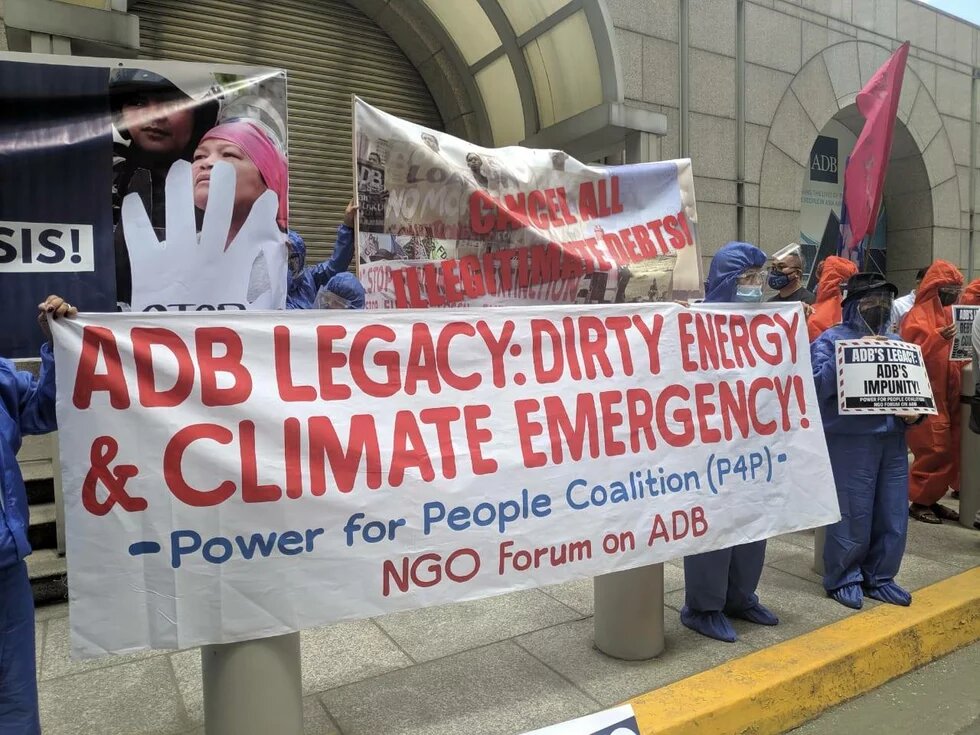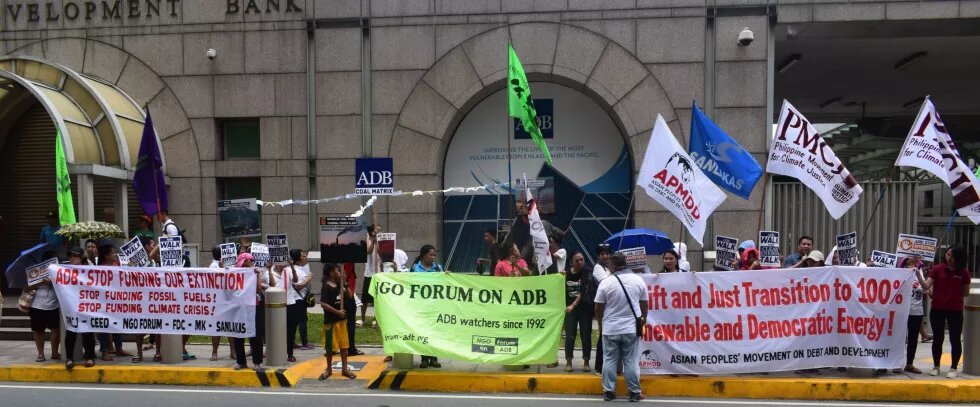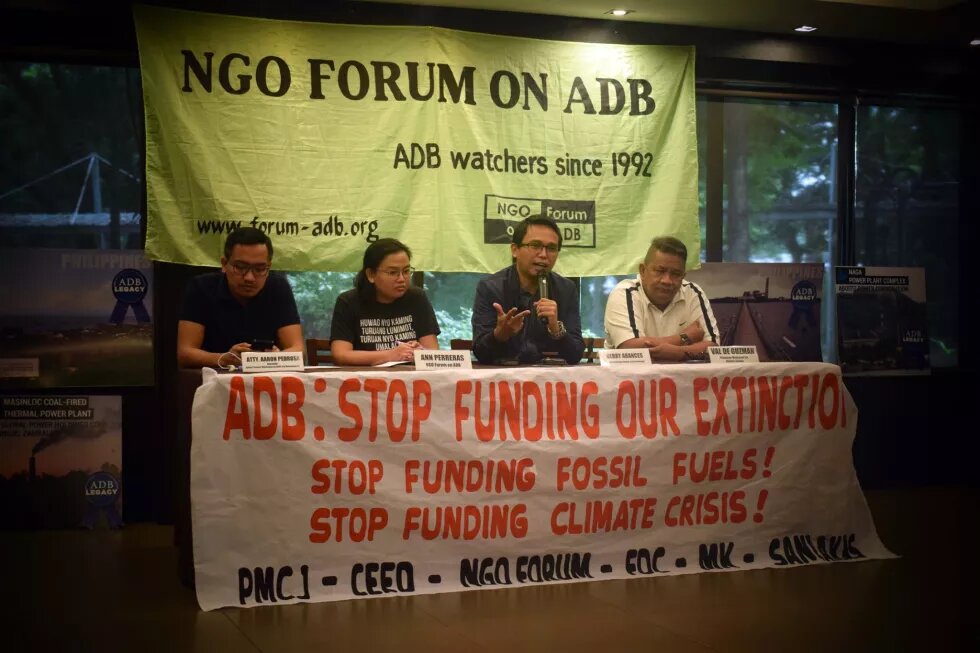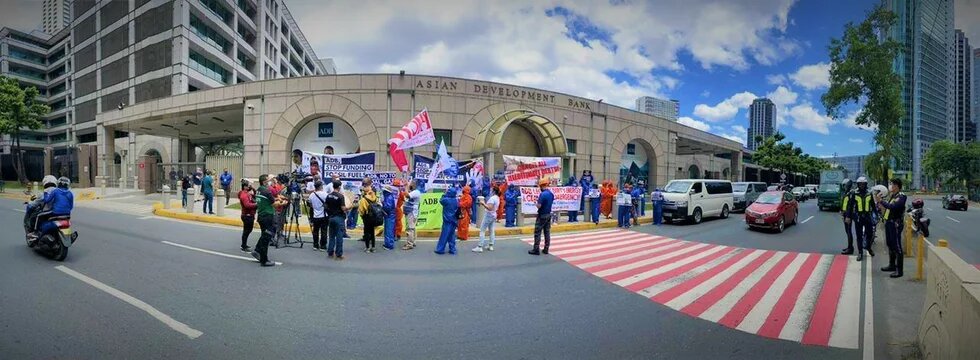
In May 2021 the Asian Development Bank (ADB) made headlines around the world with the news to exit coal. This was seen as a victory for civil society, especially to the NGO Forum on ADB, an Asian-led network of 250 civil society organizations, and said to bring much-delayed justice for all the affected communities across Asia affected by coal projects.

Rayyan Hassan, Executive Director of the NGO Forum, urged the ADB to take the coal moratorium ahead and move towards a full transition to renewable energy finance as soon as possible. In this interview, he shares what happened next and what still needs to be done.
What does the announcement of the ADB to no longer finance coal-fired investments actually mean?
Rayyan Hassan (RH): I think it’s a genuine phase out, so when you look at that paragraph 86 in the first draft released in May 2021, it’s not only about new coal but it also addresses how it can move away from existing financing of coal and coal-related infrastructure. I think that’s going to be the more critical aspect which needs to be tracked more carefully. There is a potential loophole for coal projects to go through financial intermediary lending mechanisms. Information disclosure on subprojects has been historically poor. But in terms of the loans that we can track, I think it’s a clear signal that the ADB is finally, finally moving away from coal.
"I think it’s a clear signal that the ADB is finally, finally moving away from coal."
One could also say this comes five years too late. The bank has been killing its coal portfolio slowly and then with the global push-back against coal after the Paris Agreement, the ADB realized that it did not want to expose itself to the coal market and even though it didn’t cancel it outright in public, it didn’t stop financing by 2014. So when the announcement was made, we welcomed it, but I think the devil is in the details, right?
One existing loophole is in financial institution (FIs) portfolios where you don’t know where subprojects are going. Similarly, in case of disaster lending such as ADB’s COVID-19 loans, they go directly to the treasury of borrowing governments. So if a government has a coal power plant in its national agenda gathering dust waiting for finance, it now will have the financial means to arbitrarily put money there. So while direct financing on coal is potentially addressed in this policy language, it still does not rule out the potential leakage of indirect financing from ADB ending up in coal plants because of the way in which some of the loans are being structured.
What are other details that civil society, media and the public should be monitoring in this policy from now until its finalization? What about hydropower in particular?
RH: We try to take a holistic approach in our criticism of the energy policy, we don’t want to open the door towards all forms of financing within the energy sector under the banner of clean energy solutions. For now ADB has labelled low carbon solutions to entail gas, large hydropower and financing of gas-related infrastructure. Clean energy solutions according to ADB also include environmentally destructive waste-to-energy incinerator projects as well as liquified natural gas (LNG) projects and related infrastructure.
"There is a deep interest by ADB towards large hydro because it’s a big-ticket project."
There is a deep interest by ADB towards large hydro because it’s a big-ticket project. And just to flag this in layman’s terms for people to understand: the ADB wants to finance big projects, the borrowers want to absorb big projects for commercial and profiting reasons. In general, big projects are up to the scale of USD 500 million plus going to USD 850 million or even a billion dollars – and most of them are baseload projects. So if you look at arguments against baseload, you will notice that a lot of borrowing governments have an oversupply of energy. My own country, Bangladesh, has overproduced roughly 9,000 gigawatts of surplus energy, they don’t need a new baseload – they need efficient distribution of that energy. The real question is: What will you put into the grid to generate the energy and do you really need it? I think large hydro is too expensive, but it is appetizing for borrowing governments, because there is money to be made. It’s appetizing to ADB too, because then the bank gets a secured rate of return to the loan and a higher leverage.
What needs to be done and what are positive elements?
RH: Why are projects selected? Do they hold true on the SDG7 (Sustainable Development Goal 7) ‘access to sustainable energy for all’ agenda? I think those are the questions which we want to flag to the general public so that better projects get proposed, and better projects get financed. What is a better project? What is good energy policy? We would assume that which is based on decentralized energy access, and there I think is some good language has been reflected in this draft energy policy. It is encouraging to see that there is an increased interest by the ADB to support small scale, off-grid energy solutions (especially solar and wind).
In regard to the second draft of the ADB energy policy, can you walk us through the process? After the release of the first draft in May what happened? And the second draft now? When are public consultations going to happen?
RH: It has been an uphill battle in getting transparency on the policy review process. After a lot of pressure, we got some sense of a timeline of the policy review, which we have been fighting for since October 2020. There was very little time for consultation.
Just as one example, there is a conversation – which we didn’t have – which is the subregional aspect of financing. The Greater Mekong Subregion, for example, is an area for the ADB to invest in. But if you just talk about hydro waste-to-energy according to theme, you don’t get to see what is, for example, Thailand’s national energy power sector master plan and how does it link with the nationally determined contributions (NDCs) and where does ADB fit as a financier. And that’s the conversation we want to have in the Mekong and in South Asia, because all of these countries have their own commitments to the Paris Agreement, so the ADB cannot just arbitrarily say ‘I’m going to build a gas plant here, an LNG port there’ without looking at the long-term vision of where these countries are going in regard to their Paris commitments.
The draft energy policy is also in English with no access to translated versions for people across Asia. Especially Bahasa Indonesia, Hindi, Bengali and Russian. The review process has not included community consultations and have been only in an online form. This excludes thousands of people without internet across Asia who have no chance to have a say in this review process.
Speaking of the Paris Agreement, how critical is this energy policy of the ADB in realizing it?
RH: Right now the battlefield is net zero versus real zero. Net zero is to aggregate the entire amount of emissions and then do a cost-benefit analysis and eventually you come to net zero. Real zero is you stop the emissions right now.
As civil society, we push the IPCC (Intergovernmental Panel on Climate Change) pathway 1°C to 1.5°C, which is the highest line, as it moves everything towards renewable energy and transitions toward that. The ADB is not the first multilateral development bank which announced an end to coal. It’s actually the second. The European Investment Bank last year announced that by the end 2021, they are going to stop financing all forms of fossil fuels. That was the trigger effect among the multilateral development banks (MDBs), where you saw a significant shift in the energy policy of an MDB. In Asia, I think ADB being a 55-year-old bank working in this space, giving the signal that it’s the end of coal is a very telling sign to not only MDBs operating in Asia, but also to commercial banks and bilateral banks.
What are your expectations from the Global North, especially Europe and Germany?
RH: The framing of how just transition is going to happen is very important. Just transition in a COVID-19 reality cannot lose sight of the fact that millions of people are jobless, millions of people are struggling for three basic meals a day and shelter. There are millions of people stranded without water and sanitation in small island states and in war zones such as Myanmar and Afghanistan. These are realities which you cannot deny. Local street vendors cannot go to work, so if you suddenly pull the plug on the energy sector and go renewable overnight, governments will not be able to do this transition immediately. So the northern expectation of the southern transition has to be mindful of the labor and the social costs of transition.
"The northern expectation of the southern transition has to be mindful of the labor and the social costs of transition."
First, an enabling environment needs to be created, with a clear transition plan which is timebound and 1.5 degrees aligned. Second, while you’re transitioning away from fossil fuels to solar or wind, there needs to be training of people employed in the fossil fuel sector to find decent jobs in the renewable energy sector. Pushing fossil fuel finance away too fast too soon towards renewables may not necessarily lead to positive outcomes. To fulfil climate responsibility, the social issues of livelihoods, unemployment and basic needs has to be factored in.
Are there pressure points and responsibilities for Europe or Germany too?
RH: I think a pressure point and one responsibility is to check whether a particular project helps the government, or the borrower, to achieve a 1.5-degree reality. The German government should keep track of how many projects are proposed in the fossil fuel spectrum versus how many projects are proposed purely as renewable energy by the ADB, I think that would be a telling figure for the bank to decide on voting. A more rigorous due diligence on the pre-project assessment is needed, and it needs to be aligned with the Paris criteria before a final decision is made.
My recommendation would be to ask as many questions as possible if you are the German government before you say yes to a project. The German constituency has a responsibility to ensure that false solutions do not push through in the name of climate finance and climate responsibility.
Thank you for the interview
See also: NGO Forum on ADB’s Critique of the ADB’s 2021 Energy Policy Working Paper
Check our previous video from November 2019
"Climate Change and International Financial Institutions - Rayyan Hassan"
Climate Change and International Financial Institutions - Rayyan Hassan - Heinrich-Böll-Stiftung Southeast Asia
 Watch on YouTube
Watch on YouTube





